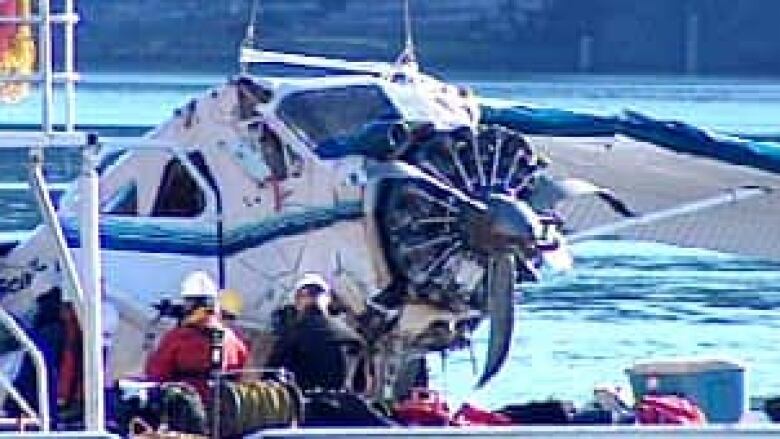Seaplane regulation changes proposed after Lyall Harbour tragedy
Federal Minister of Transport proposes passengers wear inflatable flotation device

The federal minister of transport has proposed all passengers and crew aboard commercial seaplanes wear flotation devices from the moment they get on the plane to the moment they get off.
The recommendations follow a tragic crash nearLyall Harbour, B.C., that killed six people.
A de Havilland Beaver crashed into the waters near Saturna Island on Nov. 29, 2009, killing all but two people on board. An infant was among the passengers who died.
Investigators found the single-engine plane went down after it stalled, andsix people were trapped inside when it sank. The pilot and a female passenger managed to escape.
Life jackets and training
The minister has proposed all passengers and crew now wear inflatable flotation devices, and that pilots on fixed wing commercial seaplanes are trained on how to exit a plane under water.
Marc Garneau said in a statement Friday he feels these changes will make seaplanes safer.
"I'm pleased Canada continues to be an international leader in aviation safety by becoming the first country to propose the mandatory wearing of flotation devices on seaplanes. Seaplanes offer a unique and convenient way to explore Canada's landscape and to reunite families and friends in remote areas."
TSB recommendations
A TSB report two years after the accident recommended all passengers on seaplanes commonly known as float planes wear inflatable life vests. Investigators also recommended changes to aircraft so that all doors and windows be 'pop-off,' to allow passengers to exit planes quickly in case of trouble.
The federal minister also based his recommendations on another de Havilland Beaver crash in 2012 at Lillabelle Lake in Northern Ontario;an accident that killed two people.
From 1989 to 2010, 76people have died in 109float plane crashes in this country. In recent history,15 have died along the B.C. coast, according to the TSB.












_(720p).jpg)


 OFFICIAL HD MUSIC VIDEO.jpg)
.jpg)



























































































